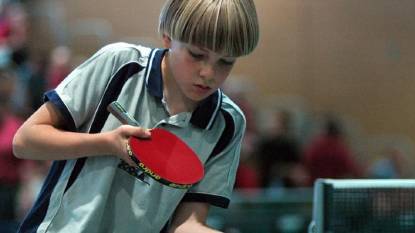5 Ways To Improve Your Table Tennis Game For Beginners
By: Simon
April 2, 2016 | Updated: October 22, 2025
It is important to learn the fundamentals of Table Tennis as it is very easy to get into bad habits that can spoil your game over the long term.
Obviously, the first step when you want to play at home is to buy one of the best ping pong tables that you can afford and dive right in!
To help you improve and develop from novice player to expert, we aim to provide top tips and techniques for beginners to help turn you into a pro!
Whether you are playing casually with your friends, knocking about with colleagues in the office or enjoying friendly family tournaments in the yard we can help!
Table tennis is a sport that has been growing in popularity over the recent years. Despite this growth, there are still many people who have trouble learning the fundamentals of table tennis
The founding techniques of any game are actually quite easy to understand, but each step needs to be broken down properly.
Throughout the next few sections we’re going to talk about the top 5 best table tennis techniques for beginners.
After reading the following sections you should have a solid understanding of table tennis fundamentals and should be ready to take on some more experienced players.
1. How to Hold the Table Tennis Bat
The first thing that you’ll want to learn is how to properly grip a table tennis bat (often referred to as a “blade, racket or paddle”).
This is extremely important because it’s one of the most basic aspects of the sport, yet it’s also one aspect that many new players seem to overlook.
Without a proper grip, you’ll never reach your maximum skill level.
There are two types of grips that you can incorporate:
- Penhold Grip (PHG)
- Shakehand Grip (SHG)
PHG is a grip that is mainly reserved for advanced players, it would feel very unnatural for a new player to incorporate this grip into their game.

Gripping the table tennis bat is quite natural and shouldn’t cause you too many problems; it’s hard to explain the proper process, so it’s recommended that you get advice from your coach on this step.
2. How to Serve the Table Tennis Ball
If you’ve played a friendly match of table tennis before then you’ll know that hitting the ball back and forth is quite easy — what’s not easy is serving. If you intend to take table tennis seriously, you’ll have to put some force into your serve ; you’ll want to whack the ball across the table as quickly and as accurately as possible.
The most important thing to keep in mind when serving is that you should begin with the ball flat in your hand. There are a few reasons for this: it shows your opponent that you have the ball and are about to take your serve, it prevents you from putting spin on the ball, it’s the official rule.
All you need to do is throw the ball up and hit it with your bat. The ball should bounce on your side of the table and then again on your opponent’s side.
3. How to Stand at the Table Tennis Table
Whenever we watch someone play table tennis, we’re often fixated on their wrist movement — after all, this is the part of the body that is controlling the table tennis bat. However, one aspect that we regularly overlook is our stance.
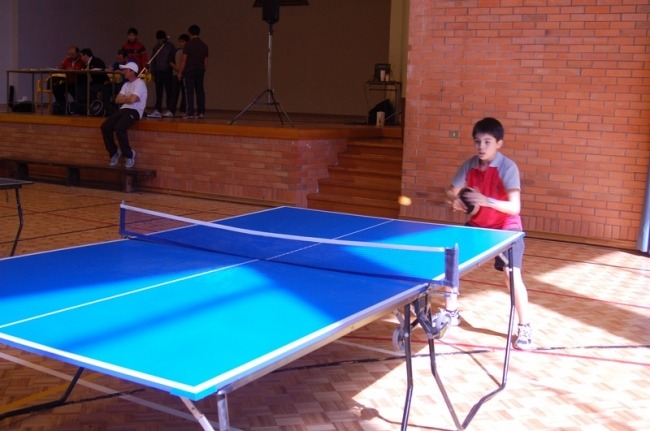
Stance is one of the most important things that new players need to think about before they get serious with table tennis.
There are two aspects of your stance that you should think about:
- Width
- Distance
Width refers to the width of your feet. You need to have a wide stance when playing table tennis as this makes it much easier to move around.
Your feet should be anywhere between 1.5 to 2 shoulder-widths apart. Don’t forget to bend your knees as well!
Distance refers to the distance between yourself and the table.
A common mistake with beginners is standing too close to the table and this can be damaging for a number of reasons: less time to react, difficult to move, and more.
Don’t be afraid to take a step or two away from the table.
If you are playing indoors, and especially if you have not yet bought one of the indoor table tennis tables then make sure that there is enough space around the table to play properly.
A room that is too cramped will not help your game improve!
4. How to Return a Table Tennis Ball after Your Opponents Has Served
The serve is often considered to be one of the most important shots in any game of table tennis, this is mainly because it’s the only type of shot where a player has complete control over the ball. The return serve is considered the second most important.
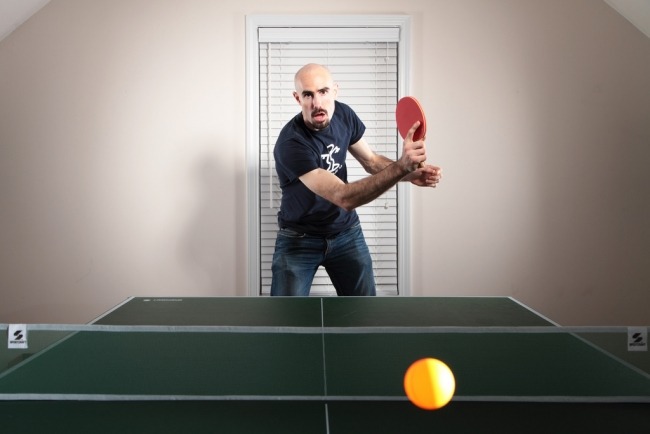
Perfecting your return serve is going to be a long process, and it definitely won’t happen overnight.
The first step for a great return serve is to be able to read your opponents serve.
You can read the spin by looking at the angle of the racket, the trajectory of the ball, and even the logo on the ball.
In most cases, there are three types of returns that you can use, depending on the type of serve that you receive: sidespin return, backspin return, and topspin return.
5. How to Spin the Table Tennis Ball
The ability to put spin on the table tennis ball will put you leaps and bounds ahead of other players — it’s often considered to be an ability that sets the amateurs apart from the professionals.
With that being said, learning how to put spin on a table tennis ball is difficult and you should therefore make sure that you have a solid foundation first.
Applying spin to the ball is easy in theory, but extremely difficult when it comes to the actual execution.
Spin can be achieved by hitting the ball at an angle instead of head-on. In addition to hitting the ball at an angle, it also helps to apply an upward, downward, or sidewards motion.
You can make your practice more effective by changing the rubbers on your table tennis bat. Reverse rubbers are the best option for practicing spin.
In Conclusion:
Table tennis might seem like a simple sport, but as you can see there is much more to it than just hitting a ball back and forth.
Players need to think about their grip, serve, stance, return, and the angle at which they hit the ball — these can all be massively contributing factors to success when it comes to table tennis.
The International Table Tennis Federation is the body that governs all the rules and makes sure that the professionals do not overstep the mark when using advanced table tennis techniques.
But for the beginners, the tried and tested methods of serving, returning, standing and ultimately winning are just fine!
If you still need to research table tennis tables before buying and want to play outdoors then head on over to our best outdoor ping pong table pages.
The advice and guidance should provide you with enough information so that you can build a solid foundation.
Remember to practice these best table tennis techniques for beginners over and over and you’ll be ready to take on more experienced players in no time at all!
Table Tennis: Basic Play Tips in Table Tennis
Featured Articles
Dive into in-depth stories, exclusive interviews, and expert advice from the world of table tennis. Discover strategies, player spotlights, and behind-the-scenes insights.

Ping Pong Revolution: How Table Tennis Transforms Homes, Offices, and Communities
Table tennis is uniquely positioned as one of the most versatile recreational activities available today. This comprehensive article explores the transformative impact of ping pong across three …
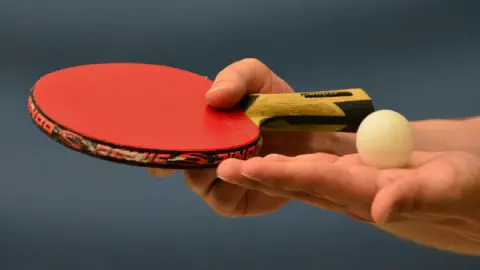
Basic Equipment Needed to Play Table Tennis
What is the basic equipment that you need to get started with playing ping pong? Our guide to the very basic table tennis equipment required to go ahead and start to play. A guide to the basics of …
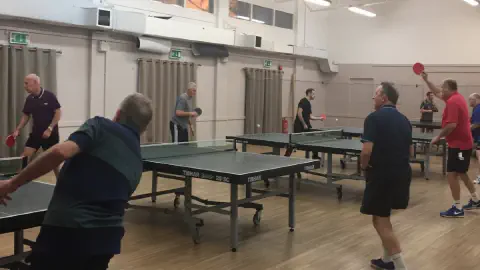
Is Ping Pong Good Exercise? The Top Health Benefits Explained
Table tennis is great exercise both for mind and body. You can use ping pong to keep fit alongside other exercise programs and raise your overall activity levels to lose weight and keep your mind …

Ping Pong Revolution: How Table Tennis Transforms Homes, Offices, and Communities
Table tennis is uniquely positioned as one of the most versatile recreational activities …

Basic Equipment Needed to Play Table Tennis
What is the basic equipment that you need to get started with playing ping pong? Our guide …

Is Ping Pong Good Exercise? The Top Health Benefits Explained
Table tennis is great exercise both for mind and body. You can use ping pong to keep fit …

